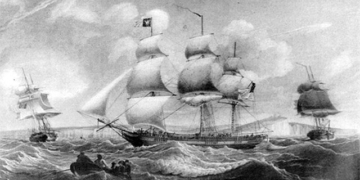In the opening match of the World Cup, German defender Torsten Frings scored an impressive goal from a distance of 36 meters. Initially, the ball flew straight and then suddenly swerved to the right within the last 10 meters.
This was an unstoppable shot, but with other types of balls, saving the goal might have been easier.
A scientist has explained why the new ball used in this year’s World Cup is challenging for goalkeepers.
The Adidas Teamgeist ball, as its name suggests, is made up of 14 panels instead of the traditional 26 or 32 panels that form a sphere.
 |
|
Explaining the path of the spinning ball. (Image: LiveScience) |
Fewer panels mean fewer stitches, causing the soccer ball to react more like a baseball, said Ken Bray, a sports scientist at the University of Bath, England.
The complex swirling air currents in the atmosphere will cause a spinning ball to drift in the direction of its spin. (see image)
This can be explained as follows: A ball moving forward while spinning clockwise will create greater friction on its left side (because the left surface moves against the direction of the air). This results in slightly higher pressure on the left side, causing the ball to tend to veer to the right in an attempt to reach equilibrium. If the ball spins counterclockwise, the opposite will occur.
However, a non-spinning ball could rebound in any unpredictable direction. Baseball players have taken advantage of this physical property to pitch the ball.
This World Cup ball is designed to resemble a baseball more closely, meaning the ball will spin lazily in the air, while the stitches will disrupt the airflow around the ball at specific points on its surface, making its trajectory very difficult to predict.
T. An


















































